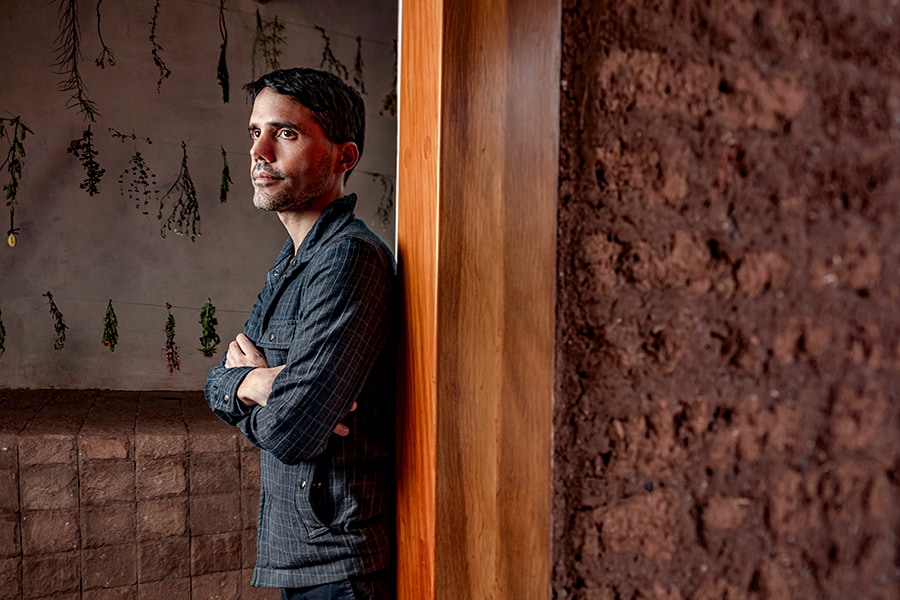
The future of food lies in your grandma's cuisine: Virgilio Martinez of Central
The Peruvian chef, whose restaurant has been voted one of the world's best for two consecutive years, on capturing biodiversity on the plate, his foraging experiences and why it's important to reconnect with food from the soil
 Virgilio Martínez Véliz, a Peruvian chef and restaurateur
Image: Gustavo Vivanco
Virgilio Martínez Véliz, a Peruvian chef and restaurateur
Image: Gustavo Vivanco
When he isn’t wearing his chef’s hat, Virgilio Martinez says he likes to paint. Most diners at Central—his fine-dining restaurant located in the Peruvian capital of Lima—would contend that, even in the kitchen, Martinez remains no less of an artist. His 14-course menu (which will set you back by PEN 1,590, a little over Rs35,000) represents the ecological diversities of the 14 altitudes housed within the Latin American nation—from the Pacific coast to the Andean peaks via the jungles of the Amazon. Perhaps no surprises that the restaurant, which opened its doors in 2008, has been voted as one of the world’s best for two consecutive years—Rank 2 in 2022 and Rank 1 in 2023—by the prestigious World’s 50 Best list.
Martinez’s inquiries into Peruvian ingredients, though, go far beyond his restaurant. Along with wife Pia Leon, an acclaimed culinary exponent who has previously been voted as the world’s best female chef, and sister Malena, who leads Mater Iniciativa, the research arm of Central, he is often out foraging across the country and devising ways to capture the uniqueness of the local produce on the menu at Central.
Last week, the 46-year-old boarded a 36-hour flight from Lima for his first ever visit to India for two exclusive pop-ups at Koishii at Mumbai’s St Regis. The dinner, organised by Masters of Marriott Bonvoy and Culinary Culture in partnership with American Express and priced at Rs50,000 per person, sold out within a few hours. On offer was an eight-course menu that showcased ingredients as eclectic as sea lettuce (an algae from the ocean), chulpi (corn from the mountains), and yacon (tubers grown in the Amazon).
Before he headed off to prep for the event, Martinez sat down for a chat with Forbes India to discuss why he loves to dig deep into ancient cultures, how the future of food can be sustainable and what being No 1 means to him (or doesn’t). Edited excerpts:
Q. Your restaurant, Central, has been voted the best restaurant in the world in 2023. What does it take to be world No 1?


















